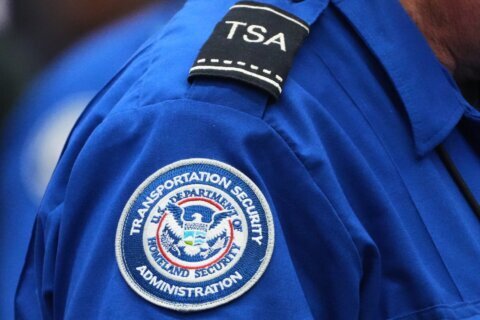Editor’s note: This video contains explicit language and may not be appropriate for some viewers.
(Video courtesy of David Lehan of Lusby, Maryland)
WASHINGTON — What is very likely a humpback whale has been spotted in the Chesapeake Bay.
Cellphone video of the whale was captured by David Lehan of Lusby, Maryland last Friday while he was acting as first mate on a charter boat fishing for striped bass.
“I wouldn’t say definitely, but it’s probably a humpback whale,” said Susan Barco, senior research scientist with the Stranding Response Program of the Virginia Aquarium & Marine Science Center.
The whale was spotted at 2:30 p.m. Friday in about 80 feet of water due east of Solomons, Maryland near the mouth of the Patuxent River.
“It’s pretty unusual,” Barco said of the whale being so far up the Chesapeake Bay away from the ocean. “It’s probably been a good 25 years since I remember one up that far.”
Lehan said he didn’t believe it at first.
“I never saw a whale that big — even out in the ocean,” he said.
The captains of “Marcy Lynn,” the charter boat, estimate the whale was 25-30 feet long and Barco believes it, saying that would make the whale an older juvenile.
“It came out of the water 10 or 12 times, so it really got a chance to show us how big it was,” Lehan said.
It was raining hard that afternoon and the owner of the boat went out on the bow in the pouring rain trying to roll video of the whale’s antics. His phone screen went gray, but Lehan said it returned to life once the phone dried out.
Barco said there are numbers of theories for why whales perform aerial acrobatics known as “breaching.”
- Breaching may be a way to knock off parasites that can gather on whale’s skin.
- The water slapping noise serves as a form of long distance communication.
- Loud landing noises scare fish into tighter schools that are easier to eat.
- Any or all of the above.
Could they just be having fun?
“That’s certainly a possibility,” Barco said. “Young wales often flipper slap and slap their tails and things like that. It could be why.”
Boaters who see whales should stay at least 300 feet away from them, Barco said, in order to avoid the chance for a collision that could injure the gentle giants.








